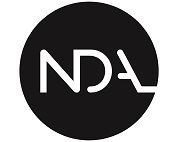Exploring The relationship between stress and workload.
Imagine your job is to attach widget A from box A to widget B from box B and place the component onto a slowly moving conveyor belt. The task is simple. It needs no specialist training, taking just 20 seconds to do. You must repeat this work task for the whole of your shift. That’s repeating the same action without much thinking or concentration. Your body has switched from manual mode to automatic. So, your mind wanders. You feel bored. You are not allowed to listen to music. There is no one to chat to whilst you are “on the production line”. The pressure your feel whilst working is minimal: welcome to “boredom pressure zone”.
Spending too long in that boredom pressure zone is not a good place to be. We rarely get much done if we find our work is meaningless. If a task is too easy, there are no difficult targets, or deadlines to meet. Work pressure is minimal, so your performance in first gear rather than top gear. It’s like sitting all day at work, with no thinking effort needed. Our brains are hard-wired to seek novelty and to habituate: you become less sensitive to a routine repeated many times. We get bored when we get accustomed to a routine activity.
Are your work tasks interesting and challenging ?
This form of workload can be stressful. . People who experience “searching boredom” feel an unpleasant restlessness, that makes you miserable. You think about alternative tasks, so you look for a more interesting activity. Refocus your attention on the boring task, make it more meaningful or look for other stimulation outside of the boring task. However, if you don’t find something, it may lead to “reactant boredom”. You will experience a high negative arousal level, you are motivated to escape this boring situation. You may become angry and blame those responsible for putting you here. “Apathetic boredom” is different. Unlike reactant boredom, you experience low arousal with a lack of positive or negative feelings, instead you just feel helplessness.
You have been moved to a different department which is responsible for using the component you made and others produced elsewhere on the line, into a workable product for sale on the market. Your task now is to complete the final assembly and check for failure, which happens quite regularly. You have been trained to know what to do. This problem solving is neither too easy or too hard. You enjoy the work but the pressure presents no challenge to you, so you feel no stress: you have no entered into the “comfort pressure” zone.
Do some tasks you have to perform at work present no challenge to you?
The pressure you feel is enough to motivate you to get things done. You can function happily here. It’s your happy place: this is comfort pressure. This workload zone is like walking at an easy pace. You can do this all day long without tiring either physically or emotionally. Rather than sitting motionless, you are walking, more effort is needed. We all have the capacity to be at this walking pace, for a long time. If you are in the comfort pressure zone, your work tasks will be simple and familiar. Tasks are easily achievable. However, time flows too slowly. No time pressure is felt whatsoever. Staying in the comfort zone all the time, is not healthy for your wellbeing.
You don’t work alone anymore but in a small team of 6. You all at times need to talk to share production issues and help each other out. The gossip grapevine has been seeded and starts to grow. Gossip serves three direct purposes: informational, emotional, and interpersonal. It is a valued source of information when workplace communication channels are poor. “I heard that our supervisor is leaving and there is someone new coming in.” It’s also the most common way of gaining valued information about our workplace social world. “Mary’s dad died last week.” It sometimes serves as an emotional release for anger or frustration. “This product is old and tired, why don’t they improve it?”. Around 14% workplace break chats is gossip and about 66% of general conversion between employees is talk about other colleagues. The gossip in your team is positive and helpful. The bond is strong. We all help each other out.
The company is now struggling financially. You and your team have been hearing about this both on the gossip chat and through formal channels. The product is by market standards out of date and needs improving. The design and production team have created a product which the marketing team says is what customers want to buy. You have been asked to join a new team and work assembling the new product. The assembly is far more complicated with new widgets that unexpectedly malfunction. When this happens, you and your team are all under far stronger pressure to focus on what went wrong. The solution is often not obvious. Your workload has changed. Gone are the familiar routines, new ways to perform are being learnt by you and the team. It takes effort to fully focus your attention and quickly find the solution. You notice Mary is struggling, but you feel energised. The moving factory conveyer belt is like a stream. At the beginning are the building blocks of the product that float downwards, getting more complex until at the end, the finished product flows into the despatch department. You know that any significant delay can interrupt the flow and incur cost production for the company.
Have there been times when the pressure at work sharply increases?
If this happens to you, you would have moved from your “comfort zone” into the “stretch zone”. Your effort pays off, you make the correct decision that works. The product comes alive as all parts work together. You are not thinking about what you will do when your finish work. You are not thinking about things that are troubling you at the moment: you are in the present moment, your concentration is just enough to keep the production line flowing It feels satisfying: at the end of the work day: a job well done. The work load is now different, it is more difficult to perform,, more complex and you need to act fast enough to keep the conveyor belt moving at the preset factory standard. The impact on your mind is called “Cognitive Load”.
As you are working assembling the new product, you are being bombarded with sensory information. Your sensory memory first filters out most of this information but keeps an impression of the most important items long enough for them to pass into working memory. Information from your sensory memory passes into your working memory, where it is either processed or discarded. Working memory can generally hold between five and nine chunks of information at any one time. When your brain processes information, it categorizes that information and moves it into long-term memory, where it is stored in knowledge structures called “schemas.” These organize information according to how you use it.
Everyday, you are absorbing the new product assembly information about your work task, which is is being added into your long term memory. This your work schema: the assembly work task. The more practiced you become accessing the long-term memory schema, the more effortless your work performance becomes. At first, your working memory is full to overspilling. As time passes the automatic schema takes over leaving your working memory more empty allowing space to focus your thoughts on other things. “Cognitive load” is the amount of information that your working memory can hold at one time. Since your working memory has a limited capacity, you should avoid overloading it with additional work activities that don’t directly contribute to workplace learning. If you do, stress may appear. This form of stress can be helping you to achieve your work tasks: it is good. This is positive stress. Your sympathetic system has been activated (heart and breathing rates increased, muscles tense becoming stronger). Your adrenal glands start pumping out adrenaline further fuelling your body for action.
When your workload pushes you into the stretch zone, the work task is much more complicated. You may be learning a new task unfamiliar to you, more focused concentration is needed. Stretch pressure is like when you have stepped up your walking pace to jogging: a slow run. Many of us can only jog for a limited time, on occasions, it demands a burst of energy. That’s like running to the bus stop to catch a bus before it drives off.
The more you feel time is being squeezed to complete a work task, pressure moves to the stretch zone. Everyone needs to stretch. There are two crucial reasons.
- Firstly, peak performance occurs when you stretch.
- Secondly, you cannot personally grow unless you can stretch.
In stretch, you believe you can assemble the widgets in time and you will be able to quickly fix any malfunction parts before the conveyor belt flow is significantly interrupted. You feel you can cope with any issue. This varies between each worker and depends on their state of mental health: from good to poor and their life experiences.
If you had to jog rather than walk at work, how long can you keep this up?
Before that happens, you are in peak performance. The work is complicated and difficult. The workload is demanding personal resources of you, but like a reservoir, it is slowly draining away. You cannot perform effectively or efficiently if your reservoir is becoming bone dry.
The factory production is not just about each worker’s individual ability to cope or work efficiently with speed and accuracy. The bottom line is selling the product that produces trading income. Each person’s workload is closely tied into the production output.
The company’s marketing campaign has worked. The sales team are reporting much higher demand for the new product. This has an impact on you and your team’s workload. New production targets have been agreed by Senior Managers. There is pressure to reduce the percentage of products that fail, as this will assist in increasing overall production. The quality assurance team and the technical materials team have worked out what they consider to be a reasonable percentage.
You and the team are working faster. You all feel your supervisor’s expectation (pressure) to be far more accurate in the assembly. The pace of the workload feels unrelenting throughout your shift. Your breaks do not seem long enough for you to relax and rest. You have moved away from the stretch pressure zone and into the “strain pressure zone”.
This is the tipping point, from a stress perspective. You are not jogging but having to run fast. The line between stretch and strain pressure can be a fine one, dependent by the length of time spent in stretch. Spending days or weeks rather than hours in stretch increases your vulnerability to switch into strain pressure. You may not even be aware of that switch.
How long can you stay in strain pressure? How long can you run quickly?
When you enter the strain zone, you have had little time to rest and recover. Emotional and physical fatigue sets in, work errors appear. Your work performance decreases. Be alert to: feeling frustrated that work barriers prevent you from achieving your work goals. Poor concentration and decision making take over. Attempts to problem solve are failing.
Imagine a seesaw, one on side is your workload (assembling the product) and on the other, are the skills needed (the speed of assembly and accuracy). The stress that we experience in the strain zone is a combination of our perceived view of how new, difficult, complex or demanding a work situation is and our perceived ability to control a work situation: to cope with and master it. In the second stress article, I will explore more deeply the relationship between stress and workplace control.
Let’s get back to the see saw. Your external demands, such as workload or available time on one side of the balance point. Your personal internal resources on the other side such as skills and energy to complete the task. If your internal resources are more or less equal to your workload, you are dealing with a work situation that does not stress you, you just feel pressure. If your workload demands substantially exceed your personal resources: then negative stress appears. Why, because you start to feel you cannot achieve what your supervisor expects of you. You lose confidence so the pressure inside of you overwhelms you. The negative workload stress is triggering poor mental health.
Sympathetic activation of your heart lungs and muscles and the injection of the adrenaline stress hormone into your bloodstream are designed for short term *fight and flight” action for example when you are in the stretch zone. They are not biologically designed for longer term use in the strain zone. They change to being unhelpful. Stay even longer in the strain zone, they become harmful, negatively affecting your feelings and thinking processes. If you notice you have changed and now you feel you cannot successfully complete the assembly task, this further pushes you to feel negatively stressed.
Being in the strain zoon can affect the whole team as gossip changes to being negative and potentially destructive in the workplace. But malicious gossip builds silos and weakens relationships, causing stress to appear. To understand stress and the workload means knowing the consequences of gossip in your workplace. Destructive gossip contributes to an erosion of trust, hurt feelings, decreased morale, damaged reputations, reduced personal credibility, increased anxiety, divisiveness, and attrition.
The whole team is feeling stressed. Friendly banter has changed. It is now about the incompetence of the company. At a breaktime, one person in your team is complaining about you not pulling your weight and letting the team down. “I always suspected they were a lazy person”. The other person smiles. This week, the team’s poor performance is noticed and pointed out. This triggers resentment and strong opinions about management. Middle managers are picking up generally two issues: production targets are not be achieved and some staff are not performing as expected. At the weekly production meeting it was decided to inform Human Resources. They decided to use the Health and Safety Executive Talking Toolkit: Preventing work-related stress. The toolkit helps them to start to have simple, practical conversations with employees.
You were asked to a meeting. They ask you the four following questions that are specifically designed for the demands of the job.
- Does your workload feel achievable? Think about which tasks take up the most time and how your organisation copes at busy times.
You reply that the assembly task is much more difficult. At the moment, I am unable to cope with the demands of my job. I feel I am letting the team down.
- Do you feel the deadlines you are given are realistic? Do you often have conflicting deadlines?
You reply the time needed to complete the task is too short. I need be more skilled.
- Have you had the right training to carry out the core functions of your job?
You reply no. If I had the right training and an opportunity to practice, I would feel more capable in successfully doing my job.
- What improvements or support could be put in place to help with any of the issues you have talked about? Think about you, your line manager, your organisation.
You reply that I would to share how I feel with my supervisor. It would be good they just listen and not judge me. I want them to understand my skills are not matched to the demands of what is expected of me.
Take a few minutes to reflect to yourself: How would you answer those questions?
This blog has been written by Chris Graham – CE Mind Trainer and views expressed are employees own

















